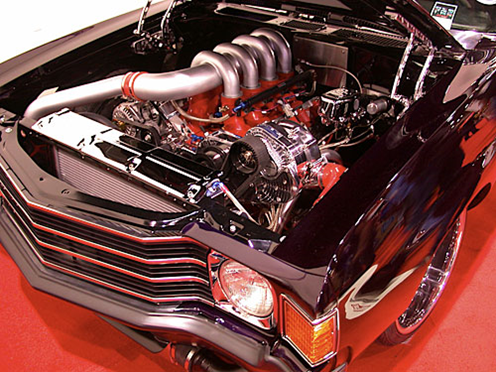It has been a huge shift in the auto industry that was size oriented before it turned to be efficiency oriented. At the turn of the last century, the earliest automakers pioneered the use of electric batteries for powering their newfangled cars. Internal combustion engines appeared but a blip on the road to efficiency.
In 1922, two decades into the automotive revolution, Henry Ford wrote, “the most beautiful things in the world are those from which all excess weight has been eliminated.”
Roughly a century later, here we are, stuck in neutral. Engineers are still vexed by electric-battery technology and, as author Jason Fagone says, motorists are still “smashing 3,000-pound vehicles through the air with cheap energy.”
Fagone is the author of “Ingenious,” a new book that chronicles the three-year race for the $10 million automotive X Prize (Crown Publishers, $26), a competition that challenged all comers to build a safe, mass-producible car that could reach the equivalent of 100 miles per gallon.
At the onset of the Great Recession, individual dreamers and tinkerers who have little or no automotive expertise retreated to their barns, garages and warehouses and built cars that far exceeded the contest standards and anything ever produced by Detroit.
The book recounts these against-the-odds, classic American success stories. Kevin Smith builds a street-legal car that reaches the equivalent of 207 miles per gallon. A group of ordinary high schoolers in Philadelphia use an ordinary Ford Focus to accomplish extraordinary feats. They solved many of those century-old problems.
Q&A with Ingenious author Jason Fagone
Now for the sucker punch. More broadly, the competitors fail. Unlike other X Prize contests, which generated advances in the aerospace and biomedical engineering industries, these inventors and their cars barely cause a ripple across the automotive landscape. To date, the big automakers haven’t bought their cars or technologies.
Through the lens of the X Prize results, Fagone examines the fragile state of American innovation. (Or maybe he examines the state of the auto industry through the lens of innovation. Perhaps a little of both). The result is one of the year’s most fascinating books. What emerges across its 375 pages is essentially a flashing red warning light for the auto industry. Business as usual cannot continue.
Namely, in an era where the democracy of invention can be accessed by anyone with a computer, and a line of code can form the backbone of a million-dollar idea, the auto industry remains cocooned, the barrier to entry remains high and the pace of innovation remains plodding.
Individuals can pivot faster
It’s only under the duress of the federal government’s new 54.5 miles-per-gallon standard, for example, that the auto industry has started producing cars with more fuel-efficient powertrains and using lightweight composites instead of steel. The auto industry has argued it needs practically every waking moment between now and the target date in 2025 to reach that standard.
Meanwhile, Smith, an employee of the Illinois Environmental Protection Agency, sequestered himself in his barn and emerged with a street-legal car that gets 207 MPGe today. As with other X Prize competitors, the auto industry hasn’t so much as sniffed in Smith’s direction. That’s a problem for Smith, but a greater one for the industry.
Like it or not, those changes are coming. Today’s carmakers stand to be bypassed by software manufacturers. In some ways they already have been.
Detroit versus Silicon Valley
Cars are rolling computers. Basic models on sale today contain 30 to 100 microprocessors. Elon Musk and his Tesla Model S have gone further, demonstrating the possibility that lies at the intersection of technology, software and vehicles. So has Google’s self-driving car.
At the Los Angeles Auto Show last month, there was a panel discussion titled “How Entrepreneurs Will Change The Automotive Industry.” All the panelists were from Silicon Valley companies.
Although Fagone doesn’t focus on it, it’s easy to see how some of the fundamental advancements introduced by X Prize competitors could play out when incubated in a Silicon Valley environment that thrives on innovation rather than in a Detroit environment that stifles it.
One example: more than 90 percent of car accidents are caused by human error, so the arrival of the self-driving car should provide steep reductions in deaths and fatalities. That steep reduction in crashes means cars no longer need to carry so much weight. Oliver Kuttner, another competitor highlighted in the book, happens to have created a car that weighs about 1,000 pounds and uses far less energy.
“Use any type of energy you want – gasoline, electricity, hydrogen, compressed natural gas,” he says in the book, “but make the car light, very light, and you’re ahead of the game.”
That’s exactly where Kuttner and others find themselves. Too far ahead, perhaps. The one question the book does not – and cannot – answer is how these modern-day Henry Fords should bide their times while they wait for the world to catch up.
It’d be wrong to suggest automakers haven’t developed new technologies. They have. But ultimately, Ingenious makes a compelling case that automakers haven’t made them anywhere close to fast enough. Everyone should be paying closer attention to that.



